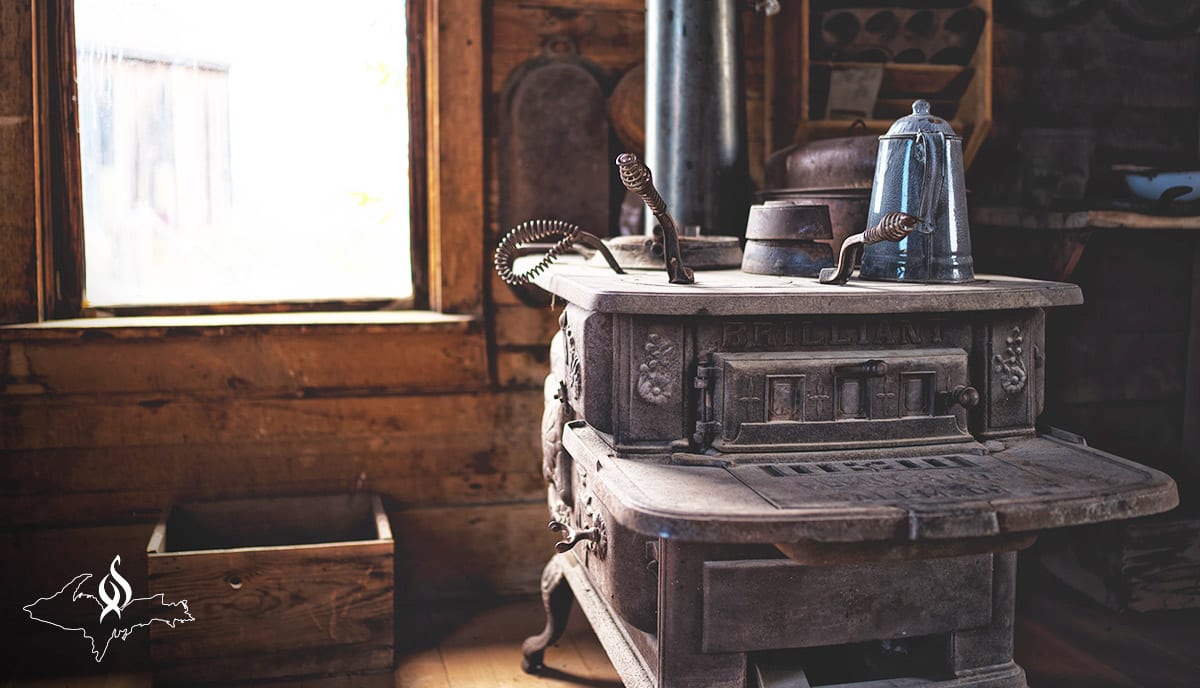Humans have a long and rich history with fire. But how did we go from open flame pits with little-to-no ventilation to the efficient wood stoves of today? For thousands of years, peoples’ focus was primarily on survival. While living in smoke-filled homes wasn’t ideal for their health, it did keep them warm and fed. Health and longevity is the last thing on your mind when you’re just trying to survive. It wasn’t until the 1600s that people began looking for more efficient ways to utilize fire. So began the evolution of the stove.

18TH CENTURY
In the early 1700s, German immigrants introduced a simple five plated stove that became well-liked in the US. It was set into the wall and would connect with the fireplace in the adjoining room, heating two rooms at once. Later that century, a wood shortage in Philadelphia inspired Benjamin Franklin to invent the three-sided iron box called the Franklin Stove. It could warm a room faster in a shorter amount of time. Franklin’s design didn’t catch on with the public, but it did provide inspiration for many of the later wood stove designs.
19TH CENTURY
The 1800s were a pivotal time in the history of wood stoves. While cast iron wood stoves weren’t as attractive as the fireplaces, they were slowly gaining popularity. This is likely because wood stoves had become much more efficient with features like controllable airflow and a baffle system. These improved wood stoves were about 30% efficient. Compared to the 80% efficiency of today it doesn’t seem like anything to write home about, but this was a significant improvement for the time.
The rising need for more wood stoves sparked the challenge of scaling down the behemoth iron-clad beasts. The most successful “modern” wood stove of this era was Philo Stewart’s Oberlin compact home kitchen stove. It did so well that he sold more than 90,000 in the following 30 years.
20TH CENTURY
The 1970s energy crisis caused a boom in woodstove popularity. Although the wood stoves of this era were still inefficient and a fire hazard due to the creosote build-up from not using dry wood, people were saving money by heating their homes with wood. In 1980, the Environmental Protection Agency (EPA) stepped in to regulate the wood stove industry. In an effort to lesson our impact on the environment, they set emission limits at 7.5 grams per hour for wood stoves, which required manufacturers to improve their designs.
TODAY
Technology advancements have made extensive improvements in the wood stoves of the 21st century. EPA-certified stoves have exceptionally low emissions – as little as 1 to 2 grams per hour. These stoves are designed to enable complete combustion. This means that there is plenty of oxygen circulating for the fire to burn at higher temperatures, which burns off the combustible gas – creating less smoke, ash and creosote buildup.
The wood stove has come a long way throughout the centuries, from an inefficient basic box to the sleek and efficient wood stoves of today. It’s a fascinating history that sure makes us thankful for all the ingenuity and hard work that has gone into improving the design of the wood stove!
